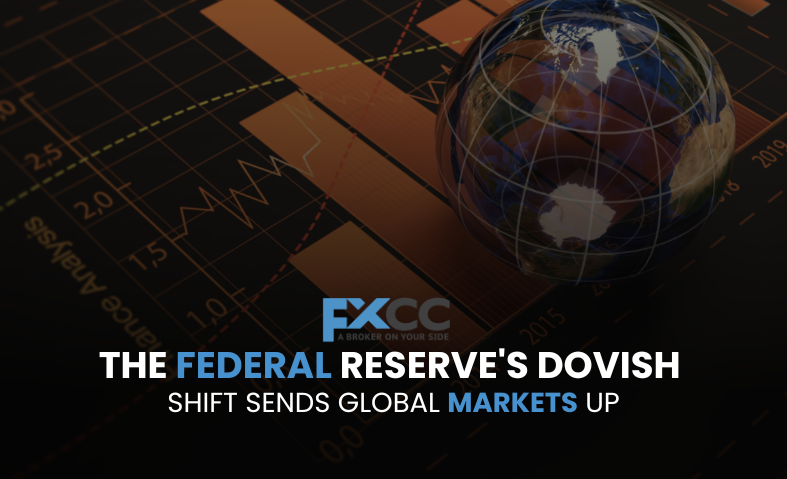The monetary policy of the United States Federal Reserve is one of the most powerful forces in the world of finance. It affects a lot of other systems. When the Fed changes its mind, the impacts are seen right away across all asset classes, from Wall Street to Tokyo and beyond. Recently, global markets have gone up a lot since the Federal Reserve has clearly changed its stance to be more dovish. This article looks at how this market reaction happened, what a “dovish shift” really means, and what it means for both advanced and developing economies.
The Dovish-Hawkish Divide Explained
To appreciate how big the recent changes in the market are, you first need to know about the main disagreement that shapes central bank policy: the “hawkish” versus “dovish” debate. These words come from the animal world and describe two different ways of thinking about how to run the economy.

A “hawkish” mindset puts controlling inflation above all else. To cool down an economy that is getting too hot, a hawkish central bank will tend to raise interest rates and make the money supply tighter. The goal is to keep prices stable, even if it means giving up some economic growth or maybe making unemployment go up in the short run. People often like this method when inflation is high, like it was in the years after the pandemic.
On the other hand, a “dovish” position puts more weight on helping the economy thrive and creating as many jobs as possible. A dovish central bank will want to cut interest rates and increase the money supply to encourage people to borrow, spend, and invest. This policy is usually used when the economy is slowing down or going into a recession to help it get back on track.
The Federal Reserve has two main jobs: to keep prices stable and to create as many jobs as possible. This is a perpetual balancing effort, and the Fed’s stance—whether it looks more hawkish or dovish at any particular time—sets market expectations and, as a result, the direction of financial assets.
How the Market Rally Works
The current rise in global markets is directly linked to a change in how the Fed talks about things. After a lengthy time of raising interest rates aggressively to control inflation, recent comments from Fed officials, including Chairman Jerome Powell, have been more cautious. They have been more open about the indicators of a cooling job market and a steady drop in inflation, which suggests that the risks may now be more in favor of a less tight policy stance.
This dovish turn has had an immediate and expected influence on financial markets for a number of reasons:
- Lower Borrowing Costs: The most direct effect of a dovish Fed is that people expect interest rates to go down. Lower borrowing costs boost the economy by getting people to borrow money to buy major things like cars and homes. Lower rates make it cheaper for firms to pay for new initiatives, acquisitions, and expansions. This hope of more spending and investment makes people feel good and drives up stock prices.
- The Search for bigger Yields: Investors have to look for bigger returns when interest rates on safe assets like government bonds go down. This money naturally moves from the bond market to riskier assets, especially stocks. A broad-based rally happens when more people want stocks, which drives up their prices. Investors “climb the wall of worry” in search of better yields, which is a strong force behind bull markets.
- Positive Corporate Outlook: A dovish turn makes the earnings outlook better for a lot of companies. Lower interest rates make it cheaper for corporations with a lot of debt to pay it off, which immediately increases their profits. Also, a stronger economy, which can be caused by looser monetary policy, can lead to higher sales and profits in many industries.
The Ripple Effect Around the World
The Fed’s policy is focused on the U.S., but it has effects all around the world. Because the dollar is the world’s main reserve currency and the U.S. economy is so big, choices made by the Fed have effects all around the world.
- Advanced Economies: The Fed is regularly looked to by central banks in other wealthy countries. If the Fed is dovish, these central banks don’t have to keep interest rates high to protect their currencies from a strong dollar. This gives them additional options for dealing with problems in their own economies, which causes stock markets around the world to rise at the same time. When the U.S. economy is predicted to get stronger, it also makes its trading partners want to buy more goods and services, which makes people feel better about the global economy.
- Emerging Markets: This has a big effect on emerging markets (EMs). When the Fed is hawkish, money tends to move out of risky emerging market assets and into safer, higher-yielding U.S. dollar-denominated assets. This capital flight puts pressure on EM currencies, which makes it harder for these countries to pay down their dollar-denominated debt. A dovish Fed changes this tendency. As U.S. interest rates go down, money starts to flow back into developing countries. This makes their currencies stronger and makes things easier for their economies. This influx of money can cause a big rise in EM equities and bonds, which is good for their economies.
The Next Step: The Path Based on Data
There is a lot of hope in the market right now, but there are also risks along the way. The Federal Reserve has said many times that its policy choices are based on facts. This means that any change in the economy, like a new rise in inflation or a shockingly good jobs report, might make the Fed rethink its dovish attitude.
Analysts are now paying close attention to important economic indicators, such the monthly jobs report and the approaching personal consumption expenditures (PCE) price index. People will look closely at these data points for any indicators that could stop the projected rate decreases. The market is currently moving in the direction of a soft landing, which means that inflation will return to the target without causing a major recession. If that idea turns out to be wrong, the rally might lose steam very rapidly.

The Bottom Line
The current rise in global markets is directly related to the Federal Reserve changing its tone from hawkish to dovish. The Fed has sparked a wave of hope by hinting at the end of its cycle of aggressive rate hikes and the possibility of future cuts. This adjustment in monetary policy has made borrowing cheaper, led to a shift of capital from bonds to equities, and created a good environment for corporate profits. The surge has helped a lot of different markets, but it has been especially good for emerging markets. But the future still depends on new economic data. The market is feeling good right now because the Fed has to walk a fine line between keeping the economy growing without letting inflationary pressures rise again, which it worked so hard to keep under control.


